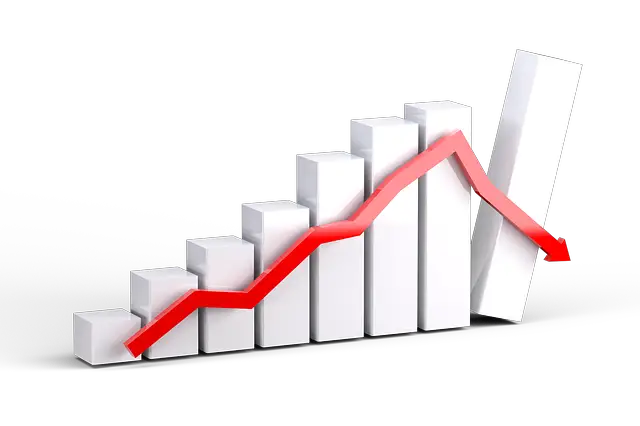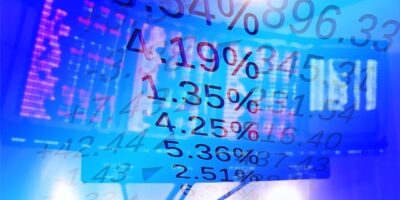What is a Bear Market?

A bear market is a financial market condition in which the prices of securities or assets are falling, and investors are pessimistic about the future of the market. Typically, a bear market is characterized by a sustained period of declining stock prices, often accompanied by widespread selling and a general sense of negativity among market participants. This can result in a vicious cycle of declining prices and investor sentiment, which can last for months or even years. Bear markets are often seen as the opposite of bull markets, which are characterized by rising prices and a general sense of optimism among investors.
Types of Bear Markets
There are different types of bear markets based on their cause, duration, and severity. Here are some of the common types of bear markets:
Cyclical Bear Market
This type of bear market is caused by the normal economic cycles of recession and recovery. Typically, cyclical bear markets last for several months to a few years.
Structural Bear Market
This type of bear market is caused by fundamental imbalances in the economy, such as high inflation or high unemployment rates. Structural bear markets can last for a longer time, usually several years.
Event-Driven Bear Market
This type of bear market is caused by a significant event, such as a natural disaster, political crisis, or war. These bear markets can be short-lived but can also lead to long-lasting economic consequences.
Secular Bear Market
This type of bear market is a prolonged period of lower market returns and economic growth, usually lasting for more than a decade. The causes of secular bear markets can be complex, such as demographic shifts or changing technology trends.
What Causes a Bear Market?
Bear markets can be caused by various economic, political, or financial factors that lead to a decline in investor confidence and a sell-off of securities. Here are some of the common causes of bear markets:
- Economic Recession: A prolonged period of economic slowdown or contraction can trigger a bear market. This can happen when businesses are struggling to make profits, leading to lower employment rates and lower consumer spending.
- High-Interest Rates: When interest rates are high, borrowing becomes expensive, and businesses and consumers may reduce their spending, which can lead to a decrease in stock prices.
- Geopolitical Events: Political instability, conflicts, or other global events can create uncertainty and panic in the financial markets, leading to a decline in stock prices.
- Corporate Scandals: High-profile corporate scandals or financial frauds can cause investors to lose confidence in the market and sell-off their shares.
- Overvaluation of Stocks: When stocks are overvalued, meaning they are trading at a higher price than their fundamental value, they are more susceptible to a price correction, which can trigger a bear market.
- Natural Disasters: Natural disasters such as earthquakes, hurricanes, or pandemics can disrupt businesses’ operations, reduce consumer demand, and cause a significant drop in stock prices.
Difference Between a Bear and Bull Market
The main difference between a bear market and a bull market is the direction of the market trend. In a bull market, the market trend is upward, and investors are optimistic and expect prices to rise. In contrast, a bear market trend is downward, and investors are pessimistic and expect prices to fall.
Here are some key differences between a bear market and a bull market:
In a bull market, investors are generally positive, confident, and willing to buy securities, leading to an increase in demand and rising prices. In a bear market, investors are negative, fearful, and often sell securities, leading to a decrease in demand and falling prices.
Economic indicators such as GDP growth, employment rates, and consumer spending are generally positive in a bull market, whereas in a bear market, these indicators may be declining, signaling a slowdown or recession.
In a bull market, investors may be more willing to take risks and invest in high-growth stocks or other securities that offer higher returns. In a bear market, investors may be more cautious and focus on preserving their capital by investing in safe-haven assets such as bonds, gold, or cash.
Bull markets can last for several years or even a decade, whereas bear markets are typically shorter in duration, lasting from a few months to a few years
Pros and Cons of a Bear Market
A bear market can have both advantages and disadvantages for investors and the economy as a whole. Here are some of the pros and cons of a bear market:
Pros:
Buying Opportunities
One of the biggest advantages of a bear market is that it provides buying opportunities for investors. During a bear market, many stocks become undervalued, providing investors with a chance to buy them at a lower price and potentially profit when the market recovers.
Market Corrections
A bear market can serve as a market correction, adjusting prices to more reasonable levels after a period of excess. This can help prevent future bubbles and promote a more stable and sustainable market.
Lower Interest Rates
During a bear market, central banks may lower interest rates to stimulate the economy, making it easier for businesses and individuals to borrow money and invest in new ventures.
Cons:
Portfolio Losses
A bear market can lead to significant portfolio losses for investors who own stocks or other securities. This can be particularly devastating for those nearing retirement or those who are heavily invested in the market.
Economic Downturn
A prolonged bear market can result in an economic downturn, causing businesses to lay off employees, reduced consumer spending, and a decrease in economic growth.
Decreased Investor Confidence
A bear market can create negative sentiment in the market, leading to decreased investor confidence and a reduction in the number of people willing to invest in the market.
Predicting the Next Bear Market
While there is no definitive way to predict a bear market, there are certain signs investors and traders should look for. These can include a prolonged downturn in the stock market, increased corporate bankruptcies, an increase in unemployment rates, and a lack of investor confidence, etc. A bear market can be a challenging time for investors and the economy, but it can also present opportunities for savvy investors to buy low and potentially profit when the market recovers. It’s important for investors to understand the risks and potential rewards of investing during a bear market and make informed decisions based on their individual goals and risk tolerance.


